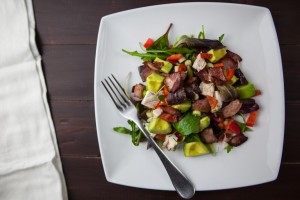Diet during diabetes must comprise of ample amount of fresh and raw foods naturally available in different colors and hues.
The key to manage fluctuations in blood sugar is to have a controlled carbohydrate intake throughout the day coupled with 3 major and mini meals each.
Restrict intake of oil, fat and simple sugar, limit daily milk and milk product intake to 3 servings, low-fat or lean cuts of meat to 1 serving, 3 servings of fresh vegetables and 2 servings of fresh fruits, complex carbohydrates to 6-8 servings.
Must have’s
With so many dietary restrictions, one very often forgets the ‘must have’s’ in diabetes. Read on to recall the important food items which provide tremendous health benefit during diabetes.
Foods rich in roughage such as leafy vegetables, whole grains and cereals, oats, wheat bran, fruits, whole pulses, vegetables in different color tones ranging from whites to greens to reds to violet and yellow.
10-12 pieces of either of these dried nuts such as almond, walnut, pistachios can be taken daily. Try to eat these in the raw, natural form without soaking or peeling off their skin.
Low fat or skimmed variety of milk and milk products.
Healthy beverages such as clear soups, fresh lemon water, fresh coconut water, iced tea, plain buttermilk etc.
Prefer whole wheat bread to refined flour bread, brown rice to white, food with added fiber to bleached counterparts.
Keep yourself hydrated and make sure you take liberal amount of water i.e., 10-12 glasses/ day, or drink water whenever thirsty.
Prefer whole/ husked varieties of pulses and lentils. Consuming whole sprouts 2-3 times a week is also a good option but make sure you do not take any caffeinated beverage in the same meal.
Lean or low-fat cuts of poultry and meats are better choice of proteins. Avoid red meat, bacon, oily seafood and yellow of egg.
Make sure your breakfast is accompanied with a fruit; lunch and dinner with non-oily dressing based salad. If you wish to add some oil to the salad, then it should be olive/ sesame oil and in controlled quantity.
Change the type of oil you use after every three months. Alternate between all the healthy oils such as canola, olive, sesame, sunflower, rice bran, groundnut etc. Not more than 2 teaspoons of visible oil should be consumed on a daily basis.
Protective foods such as cinnamon powder, coffee, garlic cloves can be taken on a daily basis to keep the blood sugar in control.
Foods to be avoided
Try to refrain as much from these.
- Food prepared with bleached/refined or white flour and deprived of any roughage, fruit, vegetable or fresh ingredient, canned and highly processed foods.
- Starchy foods like refined flour, arrowroot & root vegetables like potato, sweet potato, tapioca, etc.
- High caloric fruits like banana, mango, grapes, and lychee. Avoid taking more than 200-250 gm of fruits on a daily basis.
- Oily and greasy foods, fried foods such as wafers, pretzels, cutlets, cheesy and oily dip, oily salad dressings, etc. Instead opt for vinaigrette, lemon, based salad dressings and dips.
- Sweets made with sugar, honey and jaggery, jelly, ice cream, chocolates, candies, cakes, malted beverages, energy drinks, carbonated drinks etc.
- Limit the alcohol intake to not more than 2 servings for women and 3 for men on a daily basis, where one serving is equivalent to 30 ml.
While Shopping
While grocery shopping, search keenly for items which mention ‘whole grain’, ‘high fiber’, ‘added vitamin and minerals’, ‘zero trans-fat’, ‘low saturated fat’. Make sure you read the food label before you purchase any packaged food item.
Also, ensure to read the amount of trans-fat, saturated fat, cholesterol, simple sugars and sodium in the food items. Assess this and avoid these foods if their quantity seem alarmingly high i.e., ideally on a daily basis avoid foods with-
- any amount of trans-fat,
- more than 10 g of saturated fat,
- more than 300 mg of cholesterol,
- more than 70 kcal or 17 g from simple sugar and
- More than 2300 mg of sodium.
Remember:
- No fasting & no feasting. Always carry a candy when on the move to counter the episodes of hypoglycemia.
- Try to lose weight. If overweight try to reduce 0.5-1kg/week by indulging in a healthy lifestyle.
- Indulge in physical activity for 30 minutes per day. You may try from something as simple as walking to intense exercises, the choice is yours.
- Be stress free, relax and take deep breathes at least 3 times a day.
- Quit smoking.
SAMPLE DIET PLAN
| Early morning (6:00 AM) | Hot beverage + 2 crackers (low salt) |
| Breakfast (8:00 AM) | Egg white preparation + 1 plain , multigrain toast + 1 cup permitted fruit + 1 cup cold beverage or milk |
| Mid-day (11:00 AM) | citrus fruit + ½ cup roasted snack |
| Lunch (1:00 PM) | 1 bowl salad + 1 cup chicken and vegetable preparation + ½ cup brown rice + ½ cup yoghurt |
| Evening (4:00 PM) | Hot beverage + 2 cracker (low salt) |
| Late evening (6:00 PM) | 1 cup soup + ½ plain multigrain toast |
| Dinner (8:00 PM) | 1 bowl salad + 1 piece grilled fish + 1 cup sautéed greens + ½ cup fruit custard |

